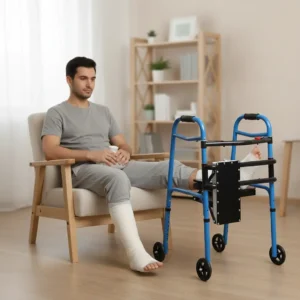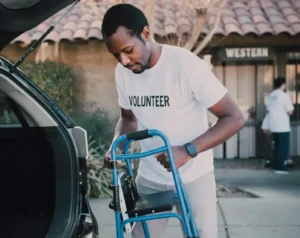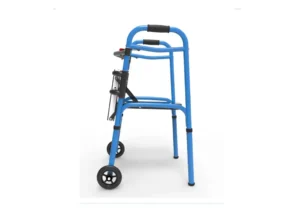Recovering from an injury or surgery can be challenging, especially when it comes to mobility. Patient mobility is a crucial aspect of recovery that not only facilitates healing but also boosts confidence. In this blog, we will explore practical tips and strategies to enhance patient mobility, making the recovery process smoother and smarter.
Understanding the Importance of Patient Mobility
Patient mobility has a significant impact on physical health and overall well-being during recovery. Understanding why mobility matters can motivate patients to remain active.
When patients engage in regular movement, they not only expedite the healing process but also reduce the risk of complications such as blood clots and muscle atrophy. Envisioning the journey of recovery begins with grasping this connection. Empowering patients to embrace mobility fosters a sense of control over their own healing.
Furthermore, increased mobility can improve circulation and enhance mood. Everyone wants to feel a little better, and movement plays a key role in this. It’s not just about the body; it’s also about the mind. Encouraging patients to visualize the benefits can be incredibly motivating and supportive.
Setting Realistic Mobility Goals
Setting achievable goals can help patients stay motivated and track their progress. We’ll discuss how to define and measure these goals effectively.
Realistic goals act as benchmarks that guide patients toward independence. Instead of aiming for an unrealistic target, it’s much more productive to set incremental milestones. For instance, rather than thinking about running a marathon post-surgery, one could focus on walking ten steps without any assistance first.
Another way to approach this is by using the SMART criteria—Specific, Measurable, Achievable, Relevant, and Time-bound. Maybe you’ll decide that each week, you want to add another five minutes to your walking routine, measuring your progress against this tangible goal. It’s essential to celebrate these milestones, no matter how small. Each achievement builds confidence and bodes well for future efforts.
Creating a Supportive Environment for Movement
An encouraging environment can make a world of difference for patients. Learn how to modify spaces and gather the right support to facilitate mobility.
To foster mobility, it’s important to create a safe and inviting space. Removing obstacles, such as clutter or loose rugs, helps to minimize the risk of falls. Making sure that essential items are within easy reach can also reduce the strain on patients as they navigate their surroundings.
In addition to a physical environment, emotional support from family and friends is crucial. Encouraging words can lift spirits and motivate patients to push through tough moments. Whether it’s a family member helping to count steps or a friend sharing their own experiences, building this supportive network can greatly enhance the recovery journey.
Moreover, consider the use of technology. Many applications available today enable patients to track their progress and set reminders for movement throughout the day. The combination of an adaptive physical space along with emotional and technological support can lead to significant improvements in patient mobility.
Incorporating Stretching and Strengthening Exercises
Incorporating specific exercises can greatly enhance mobility. We’ll provide simple routines that are easy to follow and can be done at home.
Stretching exercises are key for maintaining and improving flexibility. Gentle stretches not only warm up the muscles but also allow a greater range of motion. Encouraging patients to dedicate just a few minutes daily to stretching can have profound effects. While seated, simple neck rolls and shoulder shrugs are excellent starting points.
Strengthening exercises promote stability and support overall mobility. Activities like seated leg lifts and wall push-ups can build muscle without overexertion. It’s amazing how small, consistent efforts can lead to noticeable improvements. One could create a weekly plan, alternating between stretching and strengthening to keep it engaging.
Furthermore, these exercises can be built into daily routines. For instance, doing leg lifts while watching TV can make the process feel less daunting and more enjoyable. This approach not only bolsters physical health but also promotes a positive mindset towards recovery.
Using Assistive Devices Wisely
Assistive devices such as walkers and mobility aids can provide extra support. Understanding how to use them correctly is key to promoting independence.
These tools can be your best friends during recovery, but only if used properly. It’s crucial to understand the appropriate techniques to avoid unwanted strain or injury. For instance, positioning a walker correctly can allow for better balance and support, ensuring safe mobility.
Additionally, it’s important to regularly assess the need for such devices. As recovery progresses, some patients might find that they need less assistance over time. This gradual shift can instill a sense of agency and pride, making it an empowering event in their healing process.
The Role of Physical Therapy in Mobility Enhancement
Physical therapy can play a critical role in aiding recovery. Discover how therapy sessions can be tailored to enhance mobility and what to expect.
Patients often wonder what to expect from physical therapy sessions. These sessions are customized, focusing on individual needs and abilities. With a professional’s guidance, patients learn specific exercises designed to strengthen their bodies and enhance mobility efficiently.
Moreover, physical therapists can teach patients about body mechanics—how to move safely and efficiently. This knowledge not only aids in the recovery process but also sets the foundation for healthier movement patterns in the future. The reassurance that comes from working with a qualified professional can make a significant difference.
It’s also useful to remember that therapy is a collaborative process. Patients are encouraged to discuss their goals and preferences, shaping their treatment journey together with their therapists. This partnership can lead to empowered patients who are more active in their recovery.
Staying Motivated Through the Recovery Process
Maintaining motivation can be tough during recovery. We’ll share tips on how to stay focused and celebrate milestones along the way.
Dedication to recovery is admirable, but it can often feel challenging. Establishing a routine can promote consistency and remind patients of their progress. Keeping a journal is a wonderful way to document both achievements and setbacks, fostering a mindset of growth.
Positive reinforcement works wonders! Using a reward system—treating oneself to a favorite activity or small indulgence when a goal is met—creates an enjoyable twist to the journey. Remember that every step taken, no matter how small, brings you closer to the desired outcome.
Lastly, connecting with others who are undergoing similar experiences can bolster motivation. Support groups, whether in-person or online, provide an excellent platform for sharing stories and offers encouragement. Simply knowing that one is not alone can uplift spirits and ignite the desire to keep moving forward.
In Conclusion
Enhancing patient mobility is an essential part of the recovery journey. By implementing these tips, patients can take an active role in their recovery, improve their independence, and regain their mobility more effectively. Remember, every small step counts, and with the right approach, recovery can be a positive experience.





